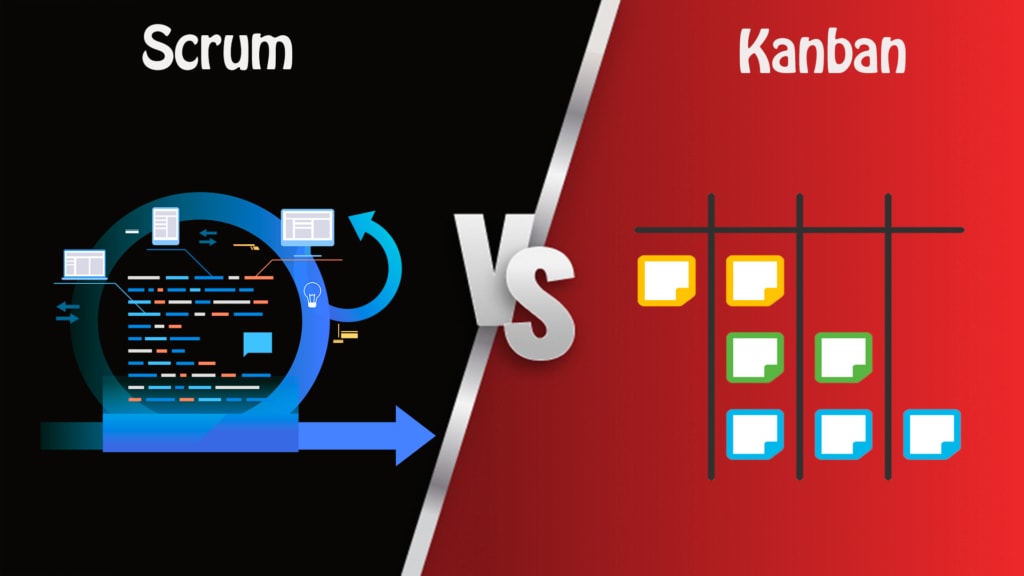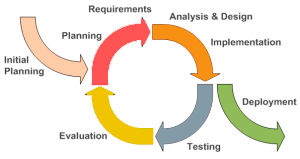Is Agile Methodology a Growing Trend in Software Development?

According to a recent study, 51% of surveyed organizations use or have used an Agile approach. Due to its flexible and interactive approach that leads to efficient workflow, timely project completion, with mitigated bottlenecks makes the Agile framework apart from the traditional methodologies.
What is an Agile Methodology – aspects you need to know?
Agile methodology is a project management process, used for software development, where demands and solutions evolve through the collaborative effort of self and cross-functional teams. Agile development is the panorama of GenNext Software Development Methodologies
Why we need Agile over traditional approaches:
- The first generation involved a typical waterfall model or waterfall methodology developed in the lines of scientific management.
- This was followed by a set of new SDLC methodologies, incorporating an element of tolerance for change by introducing incremental and iterative development approaches and their combination.
- The challenges faced in the previous software development methodologies led to the evolution of agile development methods
Previous software development methodologies, such as the cascade model, only interactive and/or only incremental approaches, provided structure to the chaotic software development process, and the gains were in the form of predictability and efficiency. Another byproduct of these structured software development methods was the increase in bureaucracy and delays.
Agile Methodology? – learn new strategies.
As the name suggests, a person who learns about what is agile methodology needs to understand the fact that this methodology makes it possible for the products from the company to be subjected to market conditions before the product reaches its final stage so that the shortcomings in the product are brought to light at the earliest and then steps are taken to rectify them so that the technique of agile methodology increases the profits of the company. Thus, it is needless to say that companies that wish to be at the top need to learn as to what is agile methodology.
Agile Methodologies Principles
- Customer satisfaction through early and continuous software delivery
- Collaboration between the business stakeholders and developers throughout the project
- Enable face-to-face interactions
- Agile processes to support a consistent development pace
- Simplicity
- Self-organizing teams
Benefits of Agile
One of the main benefits of agile is the ability to adapt and change at any step depending on feedback and to supply only relevant products to the market. It enables a fast decision-making process through a flexible organizational structure and simple communication.
Agile project management
Agile project management is a methodology that is commonly used to deliver complex projects. It emphasizes collaboration, flexibility, continuous improvement, and high-quality results.
The deliverables
Product vision statement: It states the goals for the product.
Product roadmap: View of the requirements needed to achieve.
Product backlog: Listing of what is needed to be done to complete the project.
Release plan: A timetable for the release of a working product.
Sprint backlog: The user stories (requirements), goals, and tasks linked to the current sprint.
Increment: The working product functionality that is presented to the stakeholders at the end of the sprint.
Scrum Methodology
Scrum is an Agile framework used to implement the ideas behind Agile software development.
It is a project management methodology designed for cross-functional teams working on complex projects with the using team member’s skills to create a solution/product for the customer/end-user.
The Scrum methodology is based on a set of five scrum values. Your workflow is iterative and incremental. Some people call it an agile scrum methodology and it involves three roles, three documents and three meetings as defined here.
- The three roles are the Product Owner, Scrum Master, and Scrum Team.
- The three important documents are Product Backlog, Sprint Backlog, and Sprint Burndown Chart. (Burndown Chart can be for launch and product too)
- The three meetings are the Sprint planning meeting, the daily Scrum meeting, and the Sprint review meeting. (The fourth is Retrospective Sprint). These are also ceremonies.
Benefits of Scrum
- Freedom of Initiative
- High-quality services
- Shorter delivery time
- Better RoI
- Flexibility
When to Use Scrum?
Scrum has been ever-growing in popularity over the years. It is an ideal Agile approach for projects that require well-organized from ideation to implementation.

Kanban Methodology
Kanban is a visual project management framework derived from the lean software development process and used in agile project management. The Kanban method aims to reduce waste, continuously improve the process, and increase overall productivity.
The aim of using Kanban is to remove bottlenecks during the production process so that the project can flow smoothly and still be kept within budget.
Benefits of Kanban
- Clear communication and transparency
- Flexibility
- Responsive to demand
- Focus and collaboration
When to use Kanban?
Kanban is the foremost approach in project development cycles that require continuous improvement in gradual increments and by which teams can accomplish work in just-in-time productions. The Kanban approach helps teams have a visual idea of what is going on in the project and what is next to come.
Which One to Use?
Agile methodology is an effective process for product development. But it is important to understand the type of organizations, project category, team size, etc before adopting the project development approach.
While choosing Scrum vs Kanban keep in mind if you need a more structured approach and the requirement is specific, Scrum is a good option.
However, if the customer is flexible for product improvement continuously and the pattern is not fixed, kanban more likely option.
For more information sales@aryausa.com




Leave a Reply